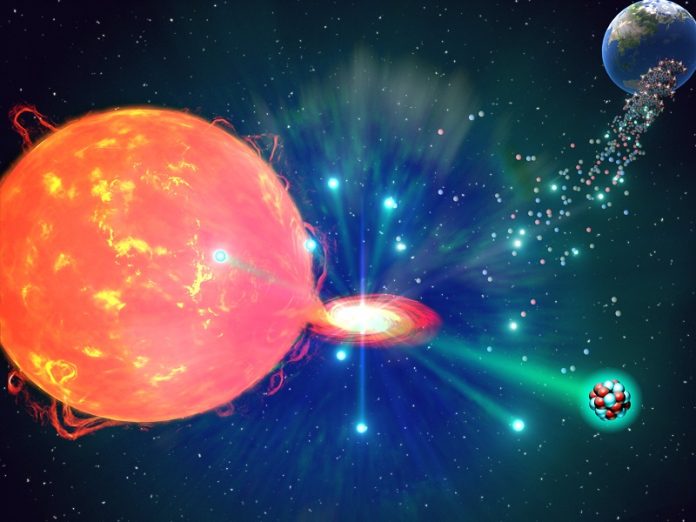
Astronomers have developed a new theory that may explain how phosphorus, an essential element for life on Earth, originated in the universe.
The theory centers on a type of stellar explosion known as an “ONe nova.”
This new model, proposed by researchers Kenji Bekki from The University of Western Australia and Takuji Tsujimoto from the National Astronomical Observatory of Japan, was recently detailed in The Astrophysical Journal Letters.
Phosphorus is crucial for all living organisms as it forms part of DNA and RNA, the molecules that carry genetic instructions for life. Despite its importance, the origins of phosphorus in the cosmos have remained somewhat mysterious.
The new theory suggests that ONe novae, explosions on the surface of a type of star called an oxygen-neon-magnesium white dwarf, are major sources of phosphorus. These explosions occur when material accumulates on the star’s surface and ignites, leading to explosive nuclear fusion.
According to the model proposed by Bekki and Tsujimoto, these explosions are not only spectacular but also chemically significant, releasing large amounts of phosphorus into space.
The theory also indicates that the frequency of these novae depends on the chemical makeup of the stars, particularly their iron content.
The researchers believe that the peak of ONe novae activity occurred about 8 billion years ago, which would have made phosphorus abundantly available in the cosmos by the time our solar system began to form around 4.6 billion years ago.
The study also predicts that these stellar explosions should lead to an increase in chlorine similar to that of phosphorus.
However, current data on chlorine levels in such contexts is insufficient to confirm this prediction.
This gap in observational data presents a testable hypothesis: if future observations match the predicted levels of chlorine and iron dependency, it would support the ONe nova model as a valid explanation for the origin of phosphorus.
Future astronomical observations, particularly those focused on stars in the outer regions of the Milky Way galaxy, are crucial.
These observations will help determine if the predicted chemical enhancements and dependencies in these stars hold true, potentially confirming the theory or indicating a need for further investigation.
This new model not only adds a piece to the puzzle of how life’s essential elements formed but also highlights the intricate connections between life on Earth and the cosmic events billions of years ago.



